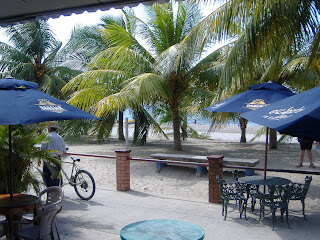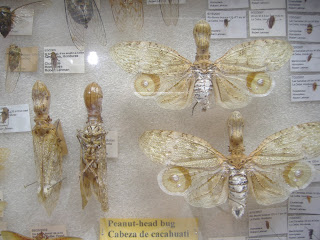
Last night after dinner, the topic came up of how cheap phones are in Honduras and how ridiculously and unnecessarily expensive they are in the States. Keep in mind that this is mostly comparing a pay as you go plan, vs a contract plan, but in the States, pay as you go is not particularly economical if you talk more than... 20 minutes a month. Contracts are available here in Honduras, but most people don't have them--they work best for people who also pay for cellular modems to go with their computers and monthly internet access in addition to their mobile phones.
Comparison #1: Actual cost of basic phone
-in Honduras: 450 lempiras ($24)
-in the US: $79 dollars assuming renewal of 2 year contract, $200 and up w/o the contract renewal
Comparison #2: Cost per minute to call US-Honduras or Honduras-US
-in Honduras:15 minutes for 10 lempiras ($0.04/minute
-in the US: $5 phone card used from a land line gets you about 24 minutes of talking time to Honduras... or approximately $0.20/min
-in the US: My cell phone company's international calling plan was $1.25 a minute to any country.
Comparison #3: Switching/activating phones
-in Honduras: almost all phones are used with a chip, so changing phones is as easy as pulling out the battery and changing the chip. If you want to switch numbers, it's ok. You can save all your phone book information to your SIM card (chip) so that it is there when you put it in the new phone. Phones are not tied to a particular number, nor phone company.
-in the US: If your phone is from AT&T, it is only "licensed" to be used with that network... with much difficulty you can "unlock" the phone or activate it with a different network, but this usually doesn't happen. So instead of saving money and using the same phone when you switch networks, you have to buy the new phone from your new phone company and probably get stuck in some contract deal like in #1 just to supposedly save a little money on the phone itself.
Comparison #4: Who pays for the call?
-in Honduras: the person making the call is charged per minute, the person receiving the call gets it for free
-in the US: Both parties pay for the call because they are charged by "airtime."
Most of the things that are true about how phones work in Honduras were also true during my time in the UK. Why does the US allow itself to be SCREWED by powerful phone companies who really don't need to charge that much? Is government regulation the solution? Is public outcry the solution? If you think that getting overcharged for phone service is just a way of life, IT ISN'T everywhere else in the world!! My North American brothers and sisters, UNITE AGAINST THE (PHONE) MAN!!! :P


















































